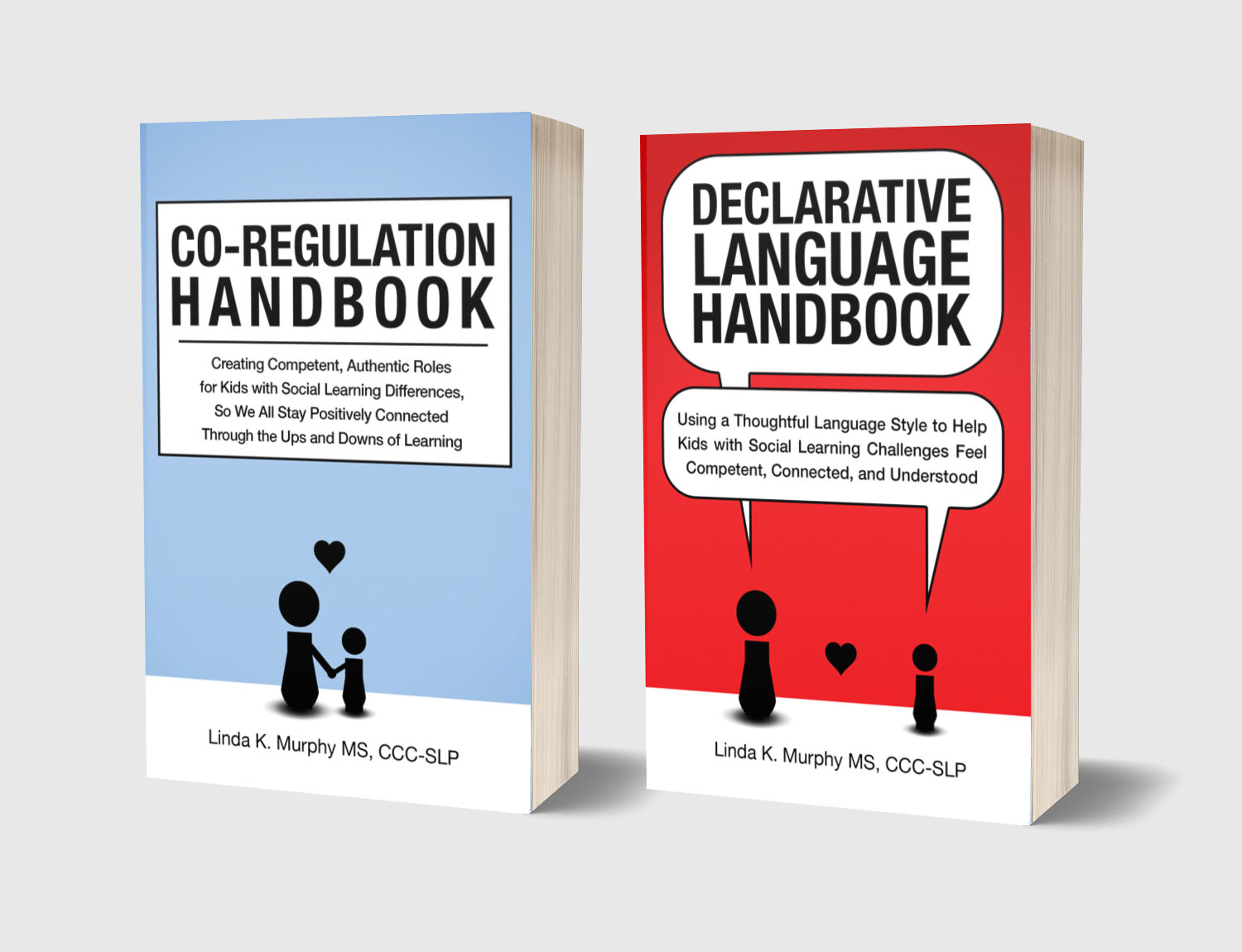Guiding Principles When Using Declarative Language & Co-Regulation
Happy December!
I’m realizing it is important to have guidelines related to declarative language and co-regulation use all in one place. Whether these tools are new ideas to you, or you’ve been using them for a while, these guiding principles can help us all stay on track as we strive to create learning environments that support growth and positive engagement for individuals of all ages.
The message I most want to communicate is this: When we use declarative language and co-regulation, it should never just be about the words that we use, or the actions we take in isolation. Rather, our success with declarative language and co-regulation is determined by the contexts we create, the intentions we bring, and the shared narratives and relationships we develop over time.
With declarative language and co-regulation, we are always future-thinking and looking towards our long terms goals, which take time and investment to achieve. Deep and lasting learning about anything is a process, but always one that is worth it!
You can refer back to these guiding principles when you feel stuck, when you want reminders, or even when you need renewed inspiration. Download this handout, hang it on your fridge or bulletin board, and share it with others!
So, without further adieu, here they are!
Moving From “Get” to “Give”: Guiding Principles When Using Declarative Language & Co-Regulation
ENTER EACH ENGAGEMENT WITH A POSITIVE INTENTION. Your intention and mindset matter because the individual will feel it, and respond in kind. When you assume a “giving” over “getting” mindset, they become more likely to open themselves up to vulnerability and learning.
INVITE BUT DON’T DEMAND. This should NEVER be about compliance. Often, when we offer autonomy (choice around how or if the individual joins), a competent role, & processing time*, the individual joins on their own. If they don’t, refer to #’s 3, 4 & 5. (*Amount of processing time varies based on the individual and the situation).
USE A TONE OF VOICE THAT IS OPEN & INVITING, AND A SLOWER RATE OF SPEECH.
Make sure you match your declarative statements with a tone of voice & rate of speech that is inviting. This might be curious, empathic, playful, or even neutral. When we use an impatient or sharp tone, or speak with a fast rate that does not allow for processing time, it will come off as a demand, and undermine the process you are trying to create.
USE NONVERBAL COMMUNICATION THAT IS OPEN, UNDERSTANDING AND CONNECTING. Similar to #3, ensure your gestures, body position and facial expressions are soft, warm, and inviting. Tense muscles communicate stress, and the individual will feel it. Take a deep breath or use a tool that works for you, so you can communicate presence, openness, and support.
OFFER AUTONOMY & COMPETENT ROLE THAT IS RIGHT FOR EACH UNIQUE MOMENT. Meet your learner where they are developmentally, but also in each moment. Remember that anxiety, stress responses (fight/flight/freeze), decreased interoceptive awareness (IA), and negative episodic memories (EM), can get in the way of engagement, regardless of what you think your learner “should” be able to do.
SCAFFOLD LEARNING AND ENGAGEMNT IN A DYNAMIC WAY. When something is not working, it’s important to give your learner the benefit of the doubt. Consider why you both might be stuck in that moment: Loss of autonomy? Uncertainty? Anxiety around feelings of competence? Attention? Comprehension? Processing time? Offer specific support that matches the moment.
EPISODIC MEMORY IS CRITICAL. Use declarative language to reflect on the past and plan for the future, in an ongoing way. Enjoy letting your narratives develop over time. This is how we teach self-awareness, self-advocacy, repair, problem solving, time management, perspective taking, and more!
SET THOUGHTFUL LIMITS WITH CARE. It is okay to set limits when needed, for example for safety. When you do, make sure the limit is reasonable & you have communicated it clearly and respectfully, and have explained your rationale using declarative language. Understanding why you are setting the limit often helps the individual process and feel okay with it.
And here is that free download again:
Have a great week!
If you like my Sunday Snippets of Support, you can receive them directly to your inbox here.



